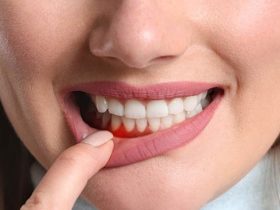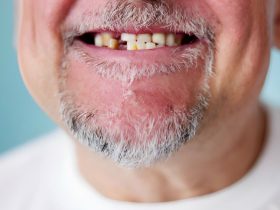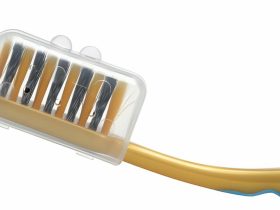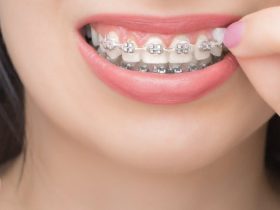
Unlock Your Smile: The Magic of Front Tooth Crowns Explained
Introduction
A front tooth crown is a dental restoration that is specifically designed to improve the appearance and strength of a damaged front tooth. It is a custom-made cap that is placed over the existing tooth, covering it completely. The crown is carefully crafted to match the color, shape, and size of your natural teeth, ensuring a seamless integration.
Front tooth crowns are typically made from materials such as porcelain, ceramic, or zirconia, which are known for their durability and natural-looking appearance. These materials are chosen to mimic the translucency and texture of natural teeth, providing a lifelike restoration.
Reasons for Needing a Front Tooth Crown

There are several reasons why someone might need a front tooth crown. One common reason is a cracked or fractured tooth. A front tooth is particularly prone to damage due to its location and function. A crown can help protect the tooth from further damage and restore its strength.
Another reason for needing a front tooth crown is severe tooth discoloration or staining. This can occur due to factors such as aging, genetics, or the consumption of certain foods and beverages. A crown can cover up the discoloration and provide a bright, white smile.
Additionally, a front tooth may be necessary if a tooth is misshapen or improperly aligned. This can affect the overall appearance of your smile and may cause self-consciousness. By placing a crown over the tooth, its shape can be corrected, resulting in a more balanced and aesthetically pleasing smile.
Types of Front Tooth Crowns

There are several types of tooth crowns available, each with its own advantages and considerations. The most common types include porcelain crowns, ceramic crowns, and zirconia crowns.
Porcelain crowns are popular due to their natural appearance and ability to blend seamlessly with surrounding teeth. They are highly customizable and can be matched to the exact shade of your natural teeth. Porcelain crowns are also stain-resistant, ensuring a long-lasting, beautiful smile.
Ceramic crowns are another option for front tooth restoration. They offer similar benefits to porcelain crowns, with the added advantage of being more durable and resistant to wear. Ceramic crowns are an excellent choice for individuals with a history of grinding or clenching their teeth.
Zirconia crowns are known for their exceptional strength and durability. They are made from a type of crystal material that can withstand heavy biting forces. Zirconia crowns are an
excellent choice for individuals with a strong bite or those who require a more robust restoration.
Benefits of Getting a Front Tooth Crown

Getting a front tooth offers numerous benefits beyond simply improving the appearance of your smile. Here are some key advantages:
Enhanced Aesthetics: A front tooth crown can significantly enhance the appearance of your smile. It can cover up imperfections such as cracks, chips, discoloration, and misshapen teeth, giving you a more attractive and confident smile.
Increased Tooth Strength: A crown provides added protection and strength to a weakened tooth. By encasing the tooth, it helps prevent further damage and reduces the risk of tooth decay. This is particularly important for front teeth, which are often subjected to biting and chewing forces.
Improved Functionality: A front tooth restores the functionality of a damaged tooth. It allows you to bite and chew properly, ensuring that you can enjoy your favorite foods without any discomfort or limitations.
Long-lasting Restoration: With proper care and maintenance, a front tooth crown can last for many years. The high-quality materials used in crowns are designed to withstand the daily wear and tear of normal dental function.
Boosted Confidence: By restoring the appearance and functionality of your front tooth, a crown can boost your self-esteem and confidence. You’ll no longer feel self-conscious about your smile, allowing you to interact with others more freely and confidently.
The Front Tooth Crown Procedure
The front tooth crown procedure typically involves several steps, beginning with a consultation with your dentist. Here is an overview of the process:
Dental Examination: Your dentist will examine your front tooth to determine if a crown is the most suitable treatment option for your specific case. They will assess the extent of the damage and discuss the treatment plan with you.
Tooth Preparation: Once you’ve decided to proceed with a front tooth crown, your dentist will prepare your tooth for the crown placement. This involves removing a thin layer of enamel to create space for the crown. The amount of enamel removed will depend on the extent of the damage and the type of crown being placed.
Impression Taking: After tooth preparation, your dentist will take impressions of your teeth. These impressions will serve as a blueprint for the creation of your custom-made crown. The impressions are sent to a dental laboratory where skilled technicians will craft your crown to ensure a perfect fit.
Temporary Crown Placement: While your permanent crown is being fabricated, your dentist will place a temporary crown over your prepared tooth. This temporary crown protects the tooth and maintains its appearance and function until the final restoration is ready.
Permanent Crown Placement: Once your custom-made crown is ready, you’ll return to your dentist for the final crown placement. Your dentist will remove the temporary crown, thoroughly clean the prepared tooth, and ensure that the permanent crown fits properly. The crown is then permanently bonded to the tooth using dental cement, creating a secure and long-lasting restoration.
Post-Placement Care: After the crown is placed, your dentist will provide you with instructions on how to care for your new restoration. This may include recommendations for oral hygiene practices, dietary restrictions, and regular dental check-ups.
How to Take Care of a Front Tooth Crown

Proper care and maintenance are essential to ensure the longevity and durability of your front tooth crown. Here are some tips to help you take care of your crown:
Practice Good Oral Hygiene: Brush your teeth at least twice a day with a soft-bristled toothbrush and fluoride toothpaste. Floss daily to remove plaque and debris from between your teeth and around the crown.
Avoid Hard and Sticky Foods: Be cautious when biting into hard foods such as ice, hard candies, or nuts, as they can potentially damage your crown. Sticky foods like caramel or chewing gum can also dislodge the crown.
Wear a Mouthguard: If you participate in contact sports or have a habit of grinding or clenching your teeth, wearing a mouthguard can provide an extra layer of protection for your crown.
Regular Dental Check-ups: Visit your dentist for regular check-ups and professional cleanings. Your dentist will monitor the condition of your front tooth crown and address any issues before they become more significant problems.
Avoid Teeth-Staining Substances: Certain substances, such as tobacco, coffee, tea, and red wine, can stain your natural teeth as well as your crown. Limit your consumption of these substances or rinse your mouth with water after consuming them to minimize staining.
By following these simple guidelines, you can ensure that your front tooth crown remains in excellent condition and continues to enhance your smile for years to come.
Front Tooth Crown Cost and Insurance Coverage
The cost of a front tooth crown can vary depending on several factors, including the materials used, the location of the dental practice, and the complexity of the case. On average, the cost of a front tooth ranges from $800 to $2,500 per tooth.
It’s important to note that dental insurance coverage for front tooth crowns varies among providers and plans. Some insurance plans may cover a portion of the cost, while others may not cover it at all. It’s best to review your dental insurance policy or consult with your insurance provider to determine the extent of your coverage.
If the cost of a front tooth is a concern, discuss payment options and potential financing plans with your dentist. Many dental practices offer flexible payment plans to help make dental treatments more affordable.
Conclusion
A front tooth crown is an excellent solution for restoring the beauty and functionality of a damaged front tooth. Whether you have a cracked, discolored, or misshapen tooth, a crown can enhance your smile and boost your confidence.
The custom-made crown is designed to match the color, shape, and size of your natural teeth, ensuring a seamless integration. It not only improves the aesthetics of your smile but also provides added protection to your weakened tooth.
Advancements in dental technology have made the front tooth crown procedure quick and painless. With proper care and maintenance, a front tooth crown can last for many years, allowing you to enjoy a beautiful and long-lasting restoration.
Don’t let a damaged front tooth hold you back from smiling with confidence. Consider a front tooth crown and unlock the potential of your smile. Visit your dentist today to explore the possibilities of a front tooth crown and embark on your journey toward a more confident and radiant smile.
Frequently Asked Questions
Yes, dental crowns can be used to restore and protect front teeth.
On average, a crown on a front tooth can last for several years with proper care and maintenance.
Absolutely, crowns are commonly placed on front teeth to improve their appearance and function.
A crown on a front tooth typically resembles a natural tooth, providing a seamless and aesthetically pleasing appearance.
Front tooth crowns are designed to blend in with surrounding teeth, often resembling natural tooth enamel in color and shape.
Yes, dental professionals can place crowns on front teeth to address various dental issues and enhance their appearance.
Crowns on front teeth are custom-made to match the size, shape, and color of existing teeth, resulting in a natural and harmonious smile.











Leave a Reply